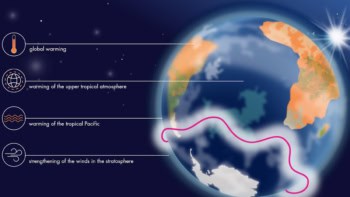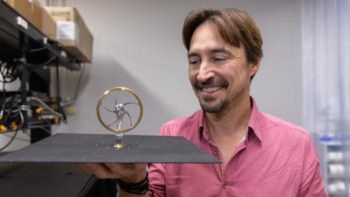
Towards the end of summer, bowhead whales appear in greater numbers in the waters to the northeast of Utqiaġvik in northern Alaska, US. The seasonal aggregation provides an opportunity for local indigenous people to restock their ice cellars. For scientists, the movements of the bowhead whales provide insight into ocean ecosystems.
By working together, hunters from this region and scientists showed that the whales congregate here at summer’s end because of alternating wind patterns that aggregate krill – shrimp-like zooplankton – in waters northeast of Utqiaġvik. As a result, hunters can forecast more accurately when whaling conditions are likely to be good, and scientists better understand the interaction between climate and ocean ecosystem dynamics. The collaboration even resulted in a film – Arctic Currents: a Year in the Life of the Bowhead Whale.
As this example illustrates, despite their differing perspectives, scientists and indigenous people have much to offer each other when it comes to understanding Arctic ecosystems. Sue Moore of the University of Washington, US, and Donna Hauser of the University of Alaska Fairbanks assessed Arctic projects that shared conventional science insights and indigenous knowledge. From sea ice and oceanography to the ecology and health of Arctic whales and seals, the study, published in Environmental Research Letters (ERL), reveals how these two very different kinds of knowledge can complement each other.
Conventional science is well equipped to make accurate measurements over large areas, the researchers note. But fancy instruments can’t peer back into the deep past. At best, scientists usually have a few decades’ worth of measurements. Indigenous people know the area near their villages (tens to hundreds of kilometres) very well, and have generational knowledge that goes back centuries, including understanding of their environment and the changes it has undergone.
“The two ways of looking at the ecosystem are complementary in their space-time scales, so we can learn more by sharing insights,” says Moore.
Moore and Hauser also note that finding a common interest and building trust is crucial to a good working relationship. Often scientists are in the field only for short periods of time, but social media tools such as Facebook can help maintain a connection and enable information sharing outside fieldwork seasons.
The various partnerships the team reviewed operated in different ways; a flexible approach appeared to be key to a good working relationship. Finding shared questions and adapting metrics to make them relevant and measurable for both parties was important.
As the Earth’s climate continues to change, Moore and Hauser suggest that finding the common ground between conventional science and indigenous knowledge can play a significant role in understanding and adapting to the rapid changes now underway in Arctic marine ecosystems.



